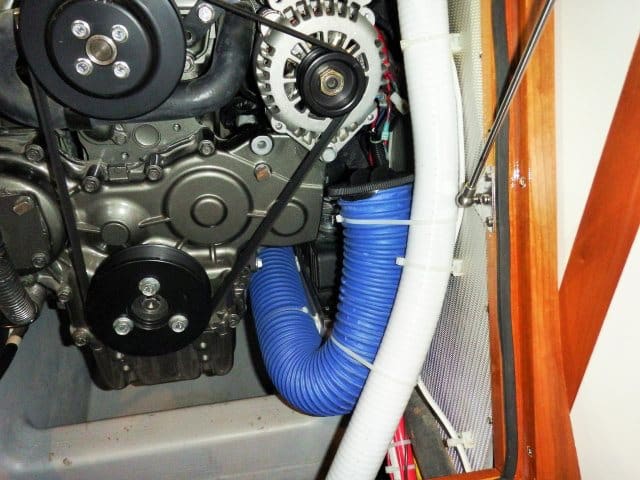I’m just back from my annual trip to Annapolis to serve as a judge for Cruising World magazine’s Boat of the Year contest. It was a milestone year for me in that I set a personal record hitting 20.6 kts on board a Gunboat 55 all carbon inter-galactic cruiser and the first year we have seen not one, but three different approaches to using and setting up . I’m going to work up an article for Cruising World on the comparison of these three systems. The photo above illustrates something I think is becoming increasingly important as boaters embrace any of the “
Whether its lithium ion or AGM battery technology one thing is common to these technologies, battery re-charge acceptance rates are considerably higher than with traditional flooded electrolyte battery systems. What this all translates to in plain English is that an alternator can find itself working much, much harder than ever before to keep up. What this all equates to is an alternator that is going to get hot, really hot!
Well, in case I haven’t said it before, heat is one of the primary factors that can cause premature failure of electrical devices and replacement of a modern high output alternator is an over $1000 expense. Not exactly pocket change in my book. So, there are several ways to deal with this issue, one is a temperature sensor mounted on the alternator that is keyed to the system voltage regulator and basically turns the alternator off when it gets too hot. Additionally, offering up a more effective cooling system for the alternator than basic engine room ventilation (especially on sailboats) is a great idea. The blue duct work you see in the above photo actually has a directional vent vane much like you see on the dashboard of your car and its aimed right at the alternator above it. Cool idea…………………………..









